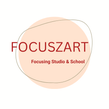Clinical Settings
During therapeutic ECAF sessions, you create the meaning of your artwork by using the creative force of the Focusing Felt Sense
We offer two settings for clinical one-on-one sessions that use the ECAF framework
* ECAF-informed Art Therapy: Psychotherapeutic art-making from the Felt Sense with a reflection on the artwork
* ECAF in Focusing Therapy: Focusing Oriented Psychotherapy FOT that includes arts-based expression of the Felt Sense
We are happy to be there for you
In clinical ECAF 1 : 1 sessions, Expressive Arts Focusing (EXAF) is used as a pathway to best practices
ECAF in Counseling and Supervision
During ECAF-informed counseling and supervision, you reflect on various works of art using intermodal Focusing engagement
We offer two formats of non-clinical support
* ECAF in Positive Art-Based Counseling for Existential Health
* ECAF in supervision for professionals in the helping fields
This includes
- Arts in Focusing supervision for Focusing Trainers or FOT's
- Supportive mentorship for trainees of the British Focusing Association
- Person-centred Creative Arts supervision for trainees of APCCA, Association for Person-centred Creative Arts
We look forward to serving you
© Pauline Loro/Unsplash
We email back within 3 business days



